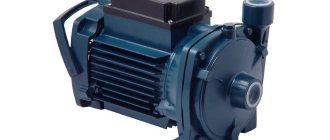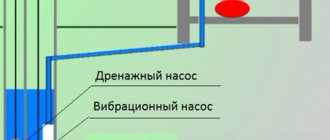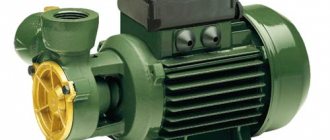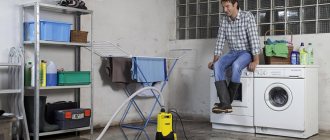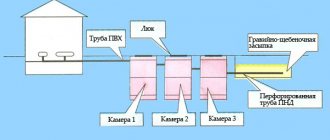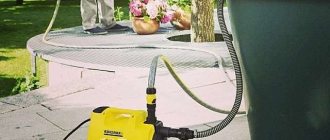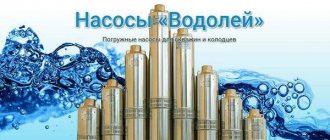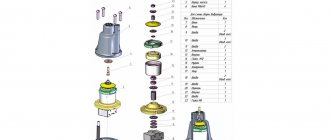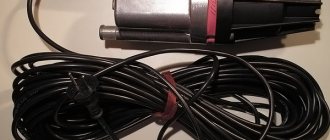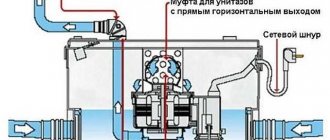To ensure water supply in private homes, vibrating well pumps are often used. This is an excellent choice for buildings with average water flow. Vibration pumps can easily pump from 300 to 1500 liters of liquid per hour. This is quite enough to ensure reliable and high-quality water supply without connecting to a central water supply. This amount of water will be enough for taking a shower, washing dishes, and operating the washing machine. That is, based on standard household purposes, a conventional vibration pump is quite capable of providing the house with clean liquid.
But you need to choose such equipment very carefully. The quality and continuity of its work depends on this. Moreover, depending on the place where the unit is used, both its type and price will differ.
Owners of private houses very often have to solve plumbing issues on their own. Not everywhere it is possible to connect to a central water supply. For normal water supply, the solution is to dig a well. This way you can get high-quality and clean water, which often becomes more useful than ordinary water from the central water supply. But you need to take into account: in order for water to get into the kitchen and bathroom, you will need special devices for pumping it.
We are talking about a pump, with the help of which water will flow under pressure into the tap from a well, barrel or any other storage container. It is worth noting that owners of dachas and private houses often install pumps in order to pump water to the site from a river or pond. This is a great way to ensure watering without extra costs.
- 1 Vibrating pump for wells
- 2 How does the pump work?
- 3 Specifications
- 4 Best Russian pumps
- 5 Foreign models
Vibrating pump for wells
Residents of remote holiday villages and owners of private houses who do not have the opportunity to provide themselves with a central water supply highly value equipment such as submersible vibration pumps. This is an indispensable unit for those cases when water needs to be pumped from a well to a house.
There is a huge range of similar products. Many high-quality pumps are produced by Russian companies. You can also purchase foreign-made units, but they will cost a little more, although they perform their functions in a similar way.
Its power depends on how deep the place from where the pump will pump water is. For deep wells, a conventional household unit may not be enough. Here it is advisable to opt for powerful submersible pumps that are capable of operating at great depths. But for ordinary wells, the depth of which does not exceed 15 m, a conventional vibration pump is also well suited.
It could even be a simple and inexpensive “Spring” or “Neptune”. Such a unit costs around 2,000 rubles, but it perfectly performs its main function, namely pumping water through a pipe.
The great thing about vibrating well pumps is that they are very easy to install. There is no need for special equipment other than the pump itself. There is no need for special skills or additional spending of money. Everything is extremely fast and simple.
Design
Vibration pumps are in demand due to their reliability, affordable cost and ease of operation. The device is connected to a hose and placed in the well, with this all the homeowner’s tasks are over, you just need to supply electricity to start pumping water.
The principle of operation is quite simple. The main part of the work is provided by an electromagnet, a vibrator and a piston. During operation, the piston periodically bends and pumps water.
The metal housing is completely sealed and additionally protects the pump from mechanical damage Source pinterest.com
A submersible vibration pump consists of many elements. If you look at their location on the diagram, you can identify 11 main components. In complex designs, additional elements may be present, but this does not change the principle of operation.
The vibration pump consists of 11 main elements Source obrawa.ru 0 0 0 Electromagnet. Electric coil with a steel plate core.
- Electromagnet . Electric coil with a steel plate core.
- Vibrator . An electromagnet is attracted to a magnet when current is applied.
- Discharge chamber.
- Suction chamber.
- Shock absorber . Responsible for returning the vibrator to its initial position. The better the material used, the more efficiently the work is carried out.
- Washers . Limit the piston stroke
- Stock _ The piston bends.
- Valves . Elastic elements are responsible for absorbing water.
- Screw . Fixes the piston.
- Piston . The moving element creates increased pressure. Most often it fails due to contamination with small grains of sand and dirt.
- Outlet channel . Discharges water into the connected hose.
Sectional design of a vibration pump Source vodatyt.ru
The design may vary depending on the manufacturer. For example, they may change the location of the valves or the outlet channel.
How does the pump work?
In order to correctly select and install such equipment, you need to have an idea of how this unit functions. The vibration pump gets its name due to the fact that it constantly alternates magnetization and demagnetization of certain areas. This causes the device to vibrate. There are several valves here. They prevent water that has entered the pipe from coming back out. The valve is activated by the movement of a piston attracted by a vibrating element. After one valve is loosened, water is drawn into the pipe. The next portion will arrive after the first one leaves this area.
The operating principle of devices of this type is always the same. Regardless of which company produced the unit, its power and throughput, it will function like all other vibration-type pumps. The difference in price is due only to the quality of the components. More expensive equipment should last longer without the need for replacement or repair. However, it often happens that cheap Russian models serve no less than expensive foreign ones.
The design of such devices, as well as the principle of operation, are extremely simple. Therefore, even a non-professional can cope with the selection of a suitable unit. If we talk about the differences between vibration pumps, they are minimal.
There are no categories into which such devices are divided. The only difference may be where the water intake hole will be located. It can be at the bottom or at the top. Everyone decides for themselves which option to choose, but experts often recommend submersible vibration pumps with top water intake. It is believed that they work longer, since the likelihood of dirt and silt getting in will be minimal. If the hole for water intake is located near the bottom, then it is possible that if the well is contaminated, particles of soil or sand will begin to appear in the water supply. This also causes rapid wear of the equipment, which is a significant disadvantage.
As an example, we can take a representative of a Belarusian company producing similar equipment, namely the Rucheek pump. It is included in the rating of the best vibration units in the country, as it has not only low cost, but also a long service life. This pump can be purchased with a top water intake valve. This ensures that bottom silt and sand do not enter the unit.
If you decide to opt for another device that is equipped with a lower water intake valve, then it must be installed correctly. It is advisable that the pump pipe does not reach the bottom by at least 1 meter. For units with a top valve, it is allowed to install the equipment 30 cm from the bottom of the well.
Principle of operation
To understand whether you need a vibration pump or whether it might be worth looking for other options, you need to have an idea of the reliability of such units, and for this you will have to understand how it works.
The design of the vibration pump is very simple. It does not have impellers or other rotating elements that can fail over time (the bane of other types of pumps). Water suction is ensured by the forward-return movements of the diaphragm. How does this happen? To explain it in simple words, that is, there is a membrane/diaphragm, on one side of which there is a certain vibrator (electric motor), and on the other - water. When the motor starts working, the membrane either bends inward or returns to its original position, creating vibration. Thus, a pressure difference is obtained due to which water is pumped.
In reality, of course, everything is not so primitive. At the moment when current is applied to the coil winding, a magnetic field is formed. This field retracts the core, which is connected by a rubber rod to the membrane/diaphragm. The membrane bends inward, and behind it, in the so-called hydraulic chamber, a rarefied pressure is created. At this moment, water enters this chamber through the valve. As soon as water appears in the hydraulic chamber, the diaphragm spring is activated, which returns it to its initial position. This creates excess pressure in the chamber, it closes the valve through which the water entered the chamber, so it has no choice but to rush into the pipe that leads to the consumer.
All these reciprocating movements are, in fact, vibrations, from which this type of pump got its name - vibration.
The undeniable advantage of vibration pumps is their unpretentiousness. There are no bearings or rotating parts that need to be lubricated. Also, due to the absence of rotating parts, the mechanism heats up less, which means there is less wear on parts. Vibration pumps are not afraid of alkaline water, mineral salts do not settle on the axes, and they can be operated in different temperature conditions. In general, everything speaks about their reliability and simplicity. And compactness and mobility provide an additional advantage.
But let's think about this: vibrations that force water to fill the pump and rise up the hose can also act destructively. Actually, like any vibrations. Under their influence, what in theory should be static shifts. That is why it is necessary to understand where vibration pumps can be used and where they cannot.
How can you use the vibration pump:
- For pumping water from flooded rooms, basements, cellars.
- For pumping water from a well under construction.
- For pumping water from a barrel or other container. For example, for watering a garden with water heated in the sun.
- To supply water from an operating well.
- To supply water from an open water source: lakes, rivers, reservoirs.
You may have noticed that this list does not include the option of using a vibrating well pump. Why? - you ask. Look, my neighbor/godfather/in-law/sister has it and everything is fine. Great, let's figure out why.
Specifications
The well vibration pump is very popular among summer residents and owners of private houses. It is highly rated for its convenience, simplicity and versatility. If you choose the unit correctly, taking into account its technical characteristics, and then use it according to the instructions without overloading, the device will last a long time and will not require repair or replacement.
In a private home or country house, a vibration pump can solve a lot of problems. It is suitable for continuous water supply in houses without a central water supply and pumping water during constant interruptions in the water supply system. A similar device can be used in a well, a pond, or a shallow well. The unit can be useful for providing water not only to a living space, but also to a garden. The same ones are used to fill the heating system. In addition, a vibration pump can also play the role of a drainage device if it is necessary to pump out water from flooded areas, basements, etc.
But in order for the pump to perform its functions well and work for a long time, it must be operated in accordance with the technical specifications. If the device is constantly overloaded, it will quickly fail.
For example, if you install a 200-watt pump, it will clearly not be enough to supply liquid to a multi-room cottage with several bathrooms and a swimming pool. However, if we are talking about a small country house with 2 rooms with a kitchen and a bathroom, then such equipment will easily cope with the task.
When purchasing a vibration pump, you need to clarify its characteristics in terms of supplying the number of liters per minute. If you buy the cheapest unit, it is unlikely to be able to produce a pressure of more than 10 liters per minute, and there will be no water in the kitchen when watering the garden.
In the technical data sheet for the device you can always find information about the optimal depth for which the vibration pump is designed. The optimal option is 7 meters. In addition, you can see information about the diameter of the pipe. This is a very important point for those who are going to use a pump to take water from a well or pump out liquid from narrow spaces. Dimensions can be from 75 to 105 mm.
But the most important technical characteristic that experts recommend paying attention to is performance. The main thing is that the unit can withstand the load to which it will be subjected during operation. It should be borne in mind that the price of the device and the additional costs of servicing the pump depend on the power and performance.
There are 3 load categories in total. For small country houses and watering the garden, the simplest units are sufficient - up to 700 liters per hour. The average load is considered to be a fluid supply of 700 to 1500 liters per hour. But there are also vibration pumps that deliver 2000 liters or more. These are already units for large wells, they are enough for multi-room houses.
Before you make a purchase, you need to calculate the pressure and level of water rise. The operation of many devices that are associated with the supply of liquid, for example, washing machines and water heating elements, depends on this. The closer the water source is to the tap, the better the pressure.
It is advisable to pay attention to such a point as thermal protection. Experts recommend choosing units with automatic shutdown in case of overheating. Such equipment is the Russian-made vibration pump “Malysh”. When purchasing a device, you need to pay attention to the cable. It must be well insulated so that it can work even at low temperatures.
Vulnerabilities of pumping equipment ↑
Despite the simple design and wear-resistant materials, some parts and components of the equipment fail over time. At the selection stage and during operation, you should pay attention to the following nuances:
- Wear of rubber elements. Membranes and valves can be replaced with new ones, but to extend service life, mesh filters are sometimes used to trap large dirt particles.
- Reduced performance due to voltage fluctuations. A stabilizer will correct the situation.
- Inability to open the housing due to corrosion of the bolts. To make it possible to replace rubber elements, steel fasteners are replaced with bolts made of non-ferrous metals.
- Overheating due to dry running. To avoid damage, you must monitor the water level.
The best Russian pumps
The rating of popular units of this type includes a large number of Russian and Belarusian products. This is due to the fact that the equipment is not inferior to foreign pumps in quality, but is significantly better in price, allowing the buyer to save significantly.
One of the most famous models among submersible vibration pumps is the “Rucheek”. These products of the Belarusian company have proven themselves well on the Russian market. The cost of the unit is about 2500 rubles. For this money, the buyer receives a pump that produces up to 1500 liters of water per hour with good pressure up to 60 meters. The power of the unit is 300 watts. User reviews of this equipment are good. But you need to take into account that it does not cope well with pumping dirty water, so it cannot be used for drainage purposes. Installation of the pump is extremely simple. The unit operates for up to 12 hours without interruption.
Among the Russian products, it is worth noting the pump under the Malysh-M brand. This is an inexpensive device that dispenses 1500 liters of water per hour. Such pumps are especially popular among summer residents. This model is designed for pumping clean water from wells. But if necessary, it can also be used as a drainage device.
The Russian Rodnichok is produced with various technical capabilities. Among the model range of this brand, there are options that will be enough only for watering the garden, and powerful units that can provide water to an entire multi-room mansion with several bathrooms. The price of the device depends on whether it costs customers from 1,500 to 2,000 rubles. A huge advantage of the products of this brand is that such pumps can operate for up to 200 hours without interruption.
Which is better?
All vibration pumps are in the same price range from 30 USD. up to 40 – 50 USD Their cost is so insignificant compared to the costs of constructing a well or borehole that it is not worth saving and buying a frankly low-quality product.
The domestic market is flooded with good models of Russian, Ukrainian and Belarusian production. But there are practically no foreign units: Italian, German, or they are not in demand. Don't buy a vibration pump made in China, save a little and just throw away the money.
- Brook
- Baby
- Aquarius
Brook
One of the most common and reliable domestic pumps. Models with this name are manufactured by different factories: the Russian JSC Livgidromash (Rucheek), the Belarusian JSC Technopribor (Rucheek 1). It has an upper water intake chamber, has a pressure of up to 60 m. But pay attention, the Rucheek pump in tests produced 598 l/hour and raised it to a height of 50 m, and Rucheek 1 only 300 l/hour to a height of 30 m. The name is practically the same, but characteristics are different. Although both are equipped with good thermal protection.
Baby
He also gained good fame among the owners of summer cottages. The “Malysh” pump is produced by “AEK Dynamo” (Moscow), “Electrodvigatel” (Bavleny), as well as other manufacturers. All of them are of fairly high quality, but it is necessary to clarify the characteristics, since there are models with an upper water intake, and others with a lower one. But you don’t have to worry about thermal protection; all models have it. This largely determines the reliability of the Kid and his good reputation.
Foreign models
The ranking of the best vibration pumps also includes Italian models. Here it is worth highlighting the units for pumping water from the Quattro Elementi well. The power of products of a given brand may vary. The cheapest options, which are well suited for use in the country, provide up to 1000 liters per hour. Pumps from an Italian company, as a rule, produce good pressure. The price of Quattro Elementi pumps is from 1,500 to 3,000 rubles. In the most expensive models you can find special automatic thermal protection, which allows the unit to switch itself off if it overheats. The disadvantage of such units is that they are only suitable for pumping clean water. Contact with dirt quickly disables them.
Vibration pumps made in Germany are also popular. For example, in many summer cottages you can find devices from the Hammer brand. These are lightweight pumps that do not deliver more than 1000 liters per hour. Despite the fact that such devices are inferior in performance to Russian ones, their price is higher.
When purchasing a vibration pump, you should pay attention to popular products that are widely represented on the local market. The thing is that any unit will eventually require replacement of some components. For rare models it can be very difficult to find spare parts.
Product comparison table
| Product Name | Inner diameter | Performance | Weight |
| Vortex VN 10N | 100 mm | 18 l/min | 3.5 kg |
| Livgidromash Malysh BV 0.12 40 U5 10 m | 99 mm | 1.5 m³/h | 3.4 kg |
| Aquarius-3 BV-0.12-40 | Not less than 100 mm | Up to 1000 l/h | 8 kg |
| Gilex Poplar Baby M-40m 1kl | More than 110 mm | 1.5 m³/h | No more than 3.4 kg |
| Sibrtech SVN300-10 | More than 100 mm | 1200 l/h | 3.2 kg |
| Stavr NPV-300V | 125 mm | 18 l/min | 3.2 kg |
| Unipump Bavlenets BV 0.12-40-U5 | Not less than 100 mm | 1600 l/hour | 3.5 kg |
| Olsa Rucheek-1, 10m | Up to 99 mm | 1.05 m³/hour | 3.6 kg |
| Bison ZNVP-300-10_M2 | – | 24 l/min | 3.7 kg |
| PATRIOT VP-10 | More than 100 mm | 1080 l/hour | 3.25 kg |
Before buying a vibrating submersible pump for private use, you should calculate the approximate volume of pumped water in order to select a model with suitable performance. The length of the network cable is also important, as is the possibility of maintenance at a service center. This review rating and real customer reviews will help you choose the best vibration pump.
Security level assessment
Safety means the presence of additional protection against overheating and its consequences. The vibrating submersible pump may overheat in cases where:
- there was a voltage drop;
- work is carried out in conditions of insufficient water;
- The piston element has broken.
For models with an upper water intake, a preventive measure is to constantly keep the body of the device under water. For pumps with a lower intake, it is considered optimal to have a function that automatically turns off the engine in case of significant overheating.
Rucheek-1
[content-egg-block template=offers_list limit=4 offset=3]
Submersible apparatus, upper water intake. The body is cast from duralumin, vertical design. Belongs to the middle class. There are eyelets for attaching the cable. A three-meter cable is included in the package. The cable size is specified upon purchase. Modification of the product Rucheek-1M – lower water intake.
Characteristics:
- Diameter; 100 mm;
- Weight:4 kg;
- Height: 280 mm;
- Power: 225W;
- Immersion depth: 1-3 m
- Capacity: 1.5 cubic meters/h
- Height of the pressure column: 40m.
User reviews:
It is necessary to inspect it once every three months; the mounting studs of the housing have a tendency to unscrew;
After pumping out contaminated water, it is necessary to clean the suction valves and disassemble them;
It can work for no more than 2 hours in a row, then the overload or heating relay is triggered.
Buy a vibration pump for a well at a price of 1,500 rubles. not a problem, but the price justifies itself, of course, the product requires constant attention and prevention
Design and principle of operation of a centrifugal pump
Based on the suction of liquid between the blades of an impeller driven by an electric motor. The electric motor spins the disk, the blades, which are in the water during rotation, displace water from the central part in the direction of the body, which has an eccentric design, the widest part of the body has an outlet into the discharge pipe of the pressure pipeline.
The movement between the blades of the liquid causes a discharge (vacuum) in the middle part of the impeller, which promotes the suction of a new part of the water into the cavity. This ensures continuous water pressure to the discharge pipe. The larger the diameter of the impeller, the more powerful the engine must be. Performance can also depend on the speed; the standard speed of household pumps is 1500 rpm. But, also common at 3000 rpm. and 4500 rpm.
To increase the pressure in the discharge pipe, the design may include a second or several discharge wheels, then such a product will be called two or multi-stage.
Rice. The operating principle of a centrifugal pump. Water enters the central part of the impeller, moves by inertia to the housing and is forced into the discharge chamber
Pump parameters
The main characteristics include:
Performance – this parameter is regulated by the standard:
low – 350 l/h, medium 750 l/h, 1500 l/h. and higher, refers to high-performance products;
Lifting height - if the water is at depth or is far from the source of consumption, then it is necessary to calculate what pressure the device for delivering water should provide. The product data sheets indicate the pressure height, or the value of the water column. Only the diameter of the pressure pipe that is indicated in the product passport is taken into account for the calculation; all parameters are reduced to the conventional indicator of the vertical column: all vertical sections of the pipeline + 10 m of the horizontal section and 5 pieces are taken into account. bends from 30 to 90 degrees are equivalent to one meter of vertical section separately.
immersion value is standard - 7 m, but priority remains with the value specified in the product passport. It remains to be seen whether a vibration or centrifugal pump is better for a well.
You can get an initial idea of this by watching the video. in which the presenter will talk about the pros and cons of using rotary and vibration products for pumping liquid from depth.
How to calculate the required lift height?
The height of the rise is characterized by the water pressure. The indicator helps to navigate the distance that can be covered by the flow of pumped liquid through a pipeline. For vibration pumps, the minimum lifting height is 40 m. The average is 60 m; the maximum pump can supply water over distances of up to 90 m.
The required pressure value can be determined by adding the indicators:
- pump location depth;
- distances between the surface of the earth and the surface of the water;
- pipeline length.
To account for unforeseen losses, it is recommended to add 20% of the received footage.
Additional rules to follow
Often system problems can be related to pipes:
Attention: When choosing a high-quality pump, you should also take care of the quality of the purchased pipes. The optimal option is polypropylene pipes. Such pipes are easy to install and have high strength connections. Their only disadvantage is the need to maintain nominal pressure.
- When choosing a pump, it is best to trust the specialists. As a result, the equipment will last much longer, and the likelihood of breakdowns will be reduced.
- If this is not possible, then you must keep in mind that German-made pumps are considered more functional and durable compared to Italian ones.
- In clay soil conditions, it is preferable to use plastic pipes rather than metal or other materials. When purchasing a pump, it is better not to save money, but to buy only high-quality European models.
You can now select vibration pumps for wells without any problems. The installation can be done entirely with your own hands. You can read about this on the pages of our website.
